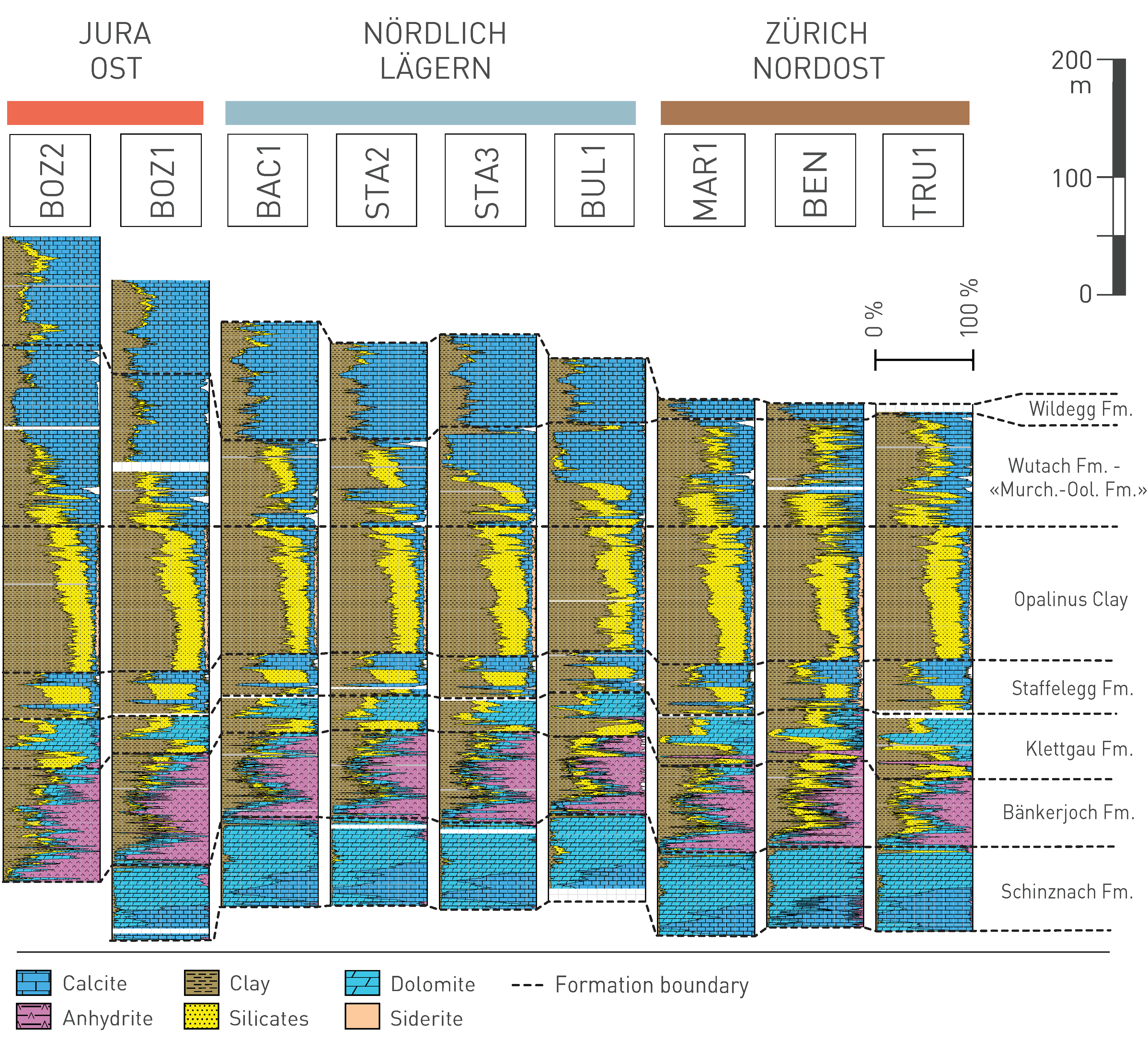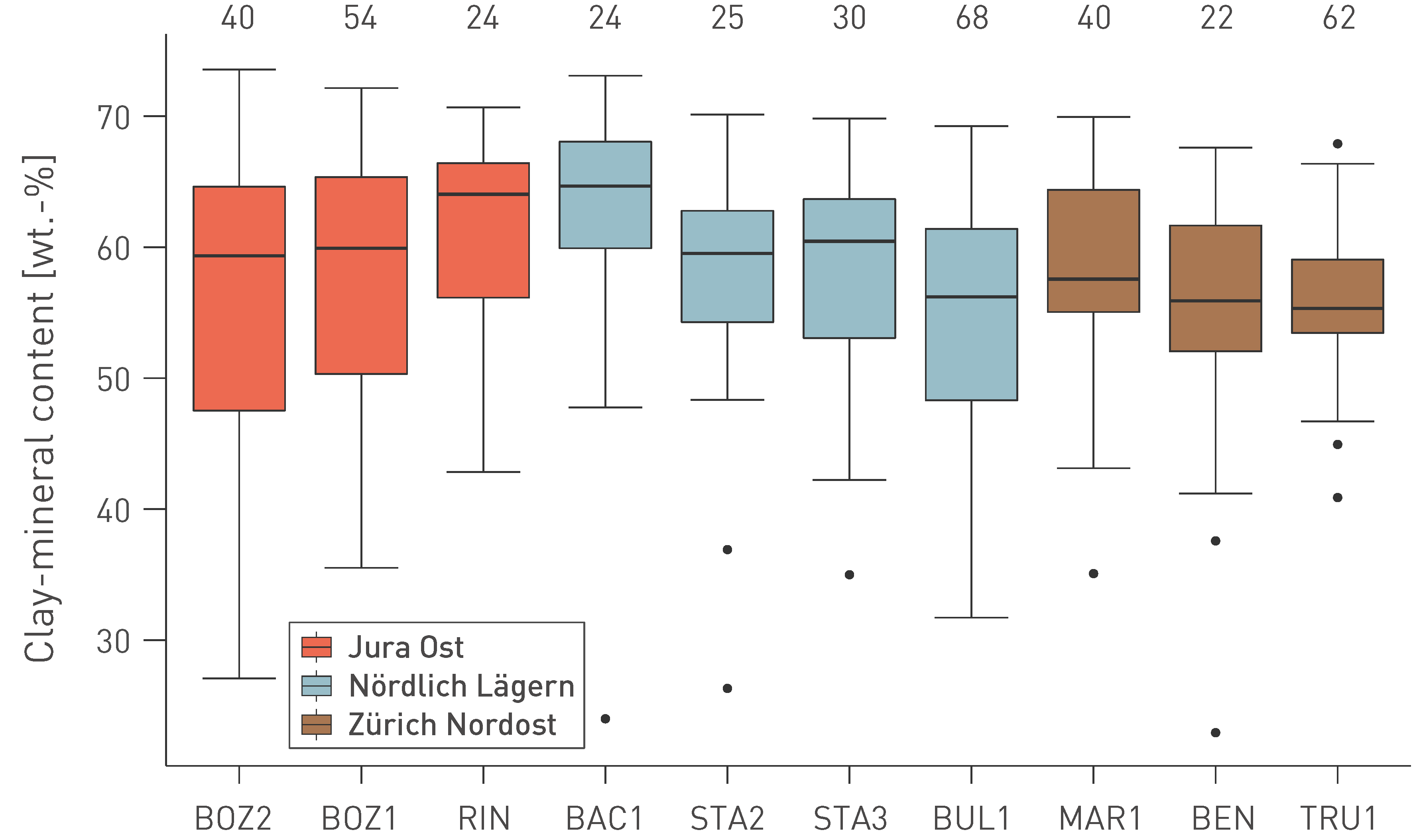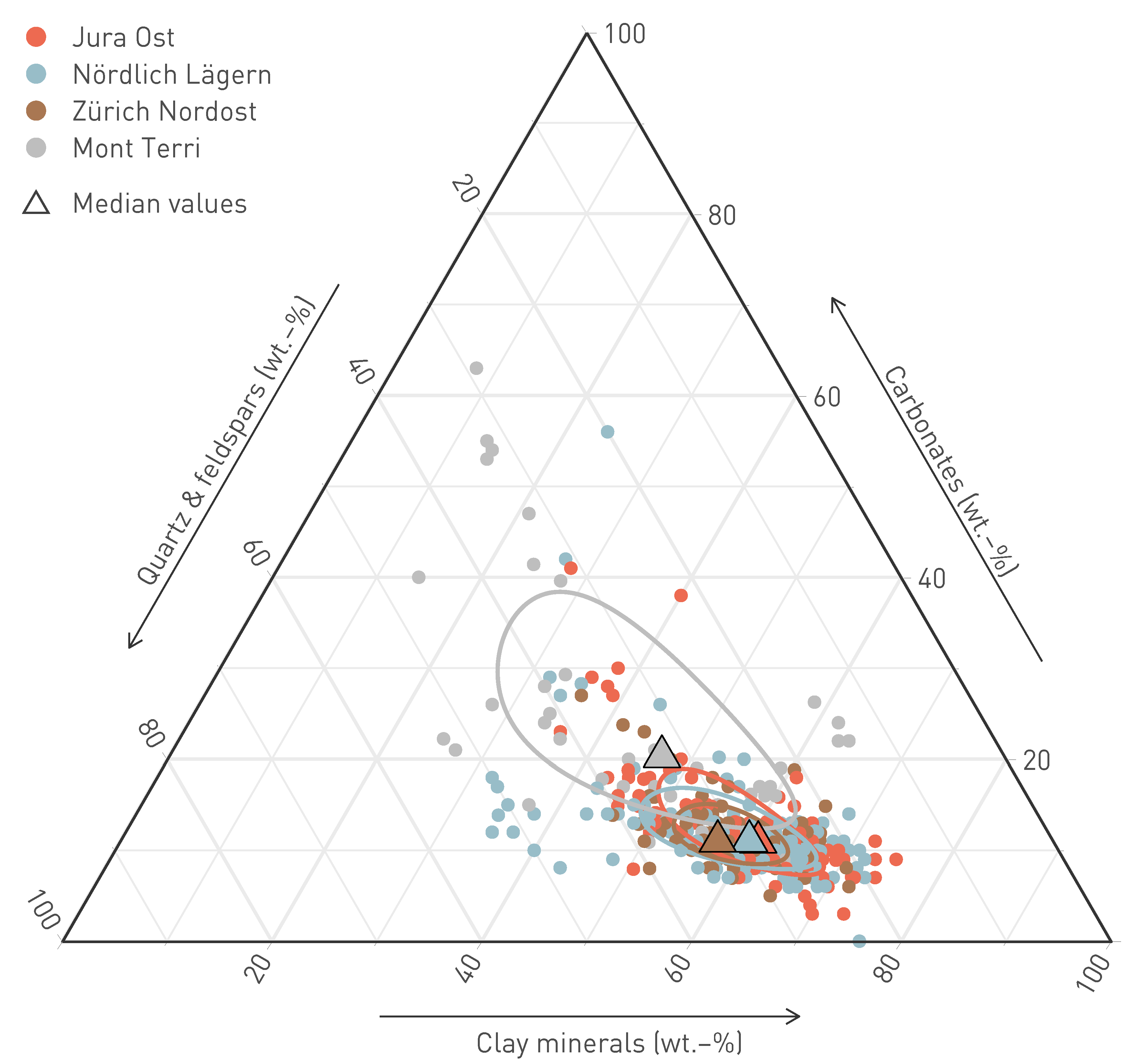The Opalinus Clay is the most clay-mineral-rich unit throughout the study area, with no systematic differences in the mineralogical composition between the siting regions (Fig. 5‑3, Fig. 5‑4). Vertically, the clay-mineral content increases slightly with depth. Remarkably, the occurrence of siderite is almost exclusively limited to the Opalinus Clay. As shown in Fig. 5‑4, the average clay-mineral content is well above 50 wt.-% at all studied locations.
Limestones and marls are the main lithologies present in the Malm Group.
The Dogger Group above Opalinus Clay is also clay-mineral-rich, but includes heterogeneities such as Fe-rich oolites, sandy lithologies (mainly in ZNO) or limestones such as the «Herrenwis Unit» in NL and the Hauptrogenstein in JO (see also Sections 4.2.7 and 4.5.3).
The Staffelegg Formation (Lias Group) below the Opalinus Clay consists of six generally clay-mineral-rich members showing consistent mineralogical compositions throughout the study area, but with substantial vertical heterogeneity (Mazurek et al. 2023a). Clay-mineral contents tend to be slightly higher in the ZNO siting region, particularly in the Frick Member. The underlying Triassic units are mineralogically heterogeneous, given the presence of evaporitic minerals (mainly anhydrite) and dolomite.
Additional figures showing mineralogical variability are included in Nagra (2024m).

Fig. 5‑3:Mineralogical composition of formations in boreholes of the siting regions
Continuous mineralogy from core-calibrated geophysical logs (Becker & Marnat 2024).

Fig. 5‑4:Clay-mineral content of the Opalinus Clay in boreholes of the siting regions, based on laboratory data
Each box encloses 50% of all measured values. The horizontal line in the box indicates the median, and the whiskers (error bars) the minimum and maximum values (min: 25th percentile – (1.5 × interquartile range); max: 75th percentile + (1.5 × interquartile range)). The black dots indicate outliers. The values above the boxplots denote the number of samples.

Fig. 5‑5:Mineralogical composition of the Opalinus Clay based on laboratory data from X‑ray diffraction
Data are shown for all TBO boreholes and for Mont Terri (BDB1 borehole). Triangles and ellipses show median values and variance for each region. Note the small differences between the three siting regions. The Mont Terri samples with low clay-mineral content relate to the carbonate-rich silty facies, which is absent in Northern Switzerland.

